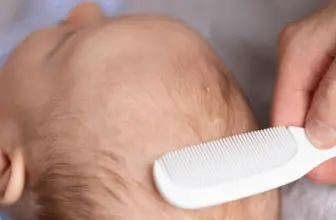Disruptive Innovation in Healthcare: What You Need to Know?

Disruptive innovation is shaking up the healthcare industry, and if you’re not prepared, you’ll be left behind. So what is a disruptive innovation in healthcare? So, you can take effective steps to make sure your business is ready for it. In this article, we will discuss what disruptive innovation is and how it is changing the healthcare landscape. We will also provide tips on how to stay ahead of the curve and prepare your business for this exciting trend!
No one could have predicted the massive disruption that technology has brought to the way we live our lives. From the way we communicate to the way we shop, to the way we get around, technology has completely changed the game. And it’s no different in the healthcare industry. In fact, healthcare is ripe for disruption, with outdated technologies and processes begging for a change. It means that you need to be prepared for changes in how healthcare is delivered – and you need to know what those changes might be. In this blog post, we’ll explore disruptive innovation in healthcare and provide you with some insights on what to expect in the future. Read on to learn more!
Read More: How Can Health Care Save Lives?
The Role of Disruptive Innovation in Healthcare
Disruptive innovation is a term used to describe a new product or service that challenges the status quo and disrupts existing markets. It’s often characterized by its simplicity and low cost, making it accessible to a wider audience. In the context of healthcare, disruptive innovation can refer to new technology or process that upends the way care is delivered.
For example, consider how smartphones have disrupted the telecom industry. Once upon a time, we all had to carry around bulky cell phones that served only one purpose – making phone calls. But with the advent of smartphones, we now have devices that can do so much more. They allow us to access the internet, check our email, and listen to music.
In other words, they’ve disrupted the telecom industry by offering consumers a more convenient and versatile option.
Examples of Disruptive Innovation in Healthcare
In fact, there are already several examples of it taking place. For instance, consider how telemedicine is disrupting the traditional way that patients interact with doctors. With telemedicine, patients can now receive care from a doctor without having to leave their homes. This is thanks to the advent of technology that allows doctors to treat patients remotely via video chat or phone call.
Another example of disruptive innovation in healthcare is the rise of wearable health sensors. These sensors allow people to track their health data – such as heart rate and blood pressure – 24/seven. This data can then be shared with doctors, who can use it to help patients manage their health more effectively.
Let’s have a look at one of the most notable answers to what is a disruptive innovation in healthcare? The rise of telemedicine. This refers to the use of technology to provide medical care remotely. It allows patients to receive treatment from a doctor or other healthcare professional without having to visit a clinic or hospital. Telemedicine can be used for a variety of purposes, including diagnosing and treating illness.
Wearable health sensors are just one example of how technology is disrupting the healthcare industry. Other examples include:
- The rise of telemedicine, which allows patients to consult with doctors online or by phone
- The increasing popularity of health apps, which allow people to track their health data and make better decisions about their health
- The development of artificial intelligence is being used to diagnose diseases and recommend treatments.
All these examples show that disruptive innovation is happening in healthcare and that it is changing the way we think about and access healthcare. If you want to stay ahead of the curve, it’
What Disruptive Innovations in Healthcare Will Shape the Patient Experience?
Disruptive innovation in healthcare is happening at a rapid pace, and it is changing the way we think about and access healthcare. Here are some of the most disruptive innovations that will shape the patient experience in the years to come:
- The increasing use of telemedicine, allows patients to consult with doctors online or by phone. This can be especially helpful for patients who live in remote areas or who have difficulty getting to appointments.
- The development of artificial intelligence is being used to diagnose diseases and recommend treatments. AI has already been shown to be effective in diagnosing conditions such as skin cancer, and it is likely that this technology will become even more sophisticated in the future.
- The growing popularity of health apps, the increasing popularity of health foods and supplements, and the trend towards more natural forms of medicine.
- The increasing use of robots in surgery and other medical procedures. Robots have already been used to successfully treat conditions such as brain tumors and prostate cancer, and their use is likely to increase in the future.
Challenges Faced By Healthcare Providers
In addition to these trends, there are also a number of challenges that healthcare providers will need to face in the coming years. One of these challenges is the growing cost of health care. In order to control costs, providers will need to find ways to provide high-quality care at a lower price. They will also need to find ways to reduce waste and improve efficiency. Another challenge facing healthcare providers is the increasing demand for services.
How Technology Has Disrupted Various Industries?
Technology has disrupted various industries, including the way healthcare is delivered. The use of technology has allowed providers to deliver care more efficiently and at a lower cost. In addition, it has allowed them to provide services to patients in a more convenient and affordable manner. As a result, disruptive innovations are likely to have a major impact on the healthcare industry in the years ahead.
In order to stay competitive, providers will need to embrace these changes and find ways to incorporate them into their operations. They will also need to find ways to adapt their services in order to meet the needs of their patients. By doing so, they can help ensure that they remain relevant.
The healthcare industry is in the midst of a major transformation. One of the driving forces behind this change is disruptive innovation. This term refers to innovations that disrupt existing industries and business models. They typically offer lower cost or more convenient options for consumers. As a result, they often have a major impact on the way businesses operate. In the healthcare industry, disruptive innovations have led to changes in how providers deliver patient care.
Technology’s Impact On Our Daily Lives
Technology’s impact on the way we live our lives has been well-documented. From the way we communicate to the way we get around, technology has changed the way we do just about everything. And healthcare is no exception. In fact, disruptive innovations in healthcare have led to changes in how providers deliver patient care. They have also had a significant impact on what treatments are available and how people access them.
Another example of disruptive innovation in healthcare is the rise of self-care. This involves people taking a more active role in their own health and wellbeing. It includes things like using apps to track activity or eating habits, as well as using online resources to find information about specific conditions.
Self-care has become increasingly popular in recent years, thanks in part to the growing number of wearable devices that allow people to track their activity and health data. These devices can help people identify potential health risks and make changes to their lifestyle accordingly.
Startups Disrupting the Healthcare Industry
There are also a number of startups that are disrupting the healthcare industry with innovative new products and services. Some examples include:
- Nuna Health has developed a wearable device that can monitor blood pressure and heart rate
- Forward, which offers a telemedicine service that allows people to connect with doctors online
- PillPack, which delivers prescription medications in pre-packaged doses
All of these startups are making it easier for people to take control of their own health and wellbeing. They are also helping to make the healthcare industry more efficient and cost-effective. Disruptive innovation is changing the way we think about healthcare, and it is definitely worth keeping an eye on!
Final Verdict!
Disruptive innovation is shaking up the healthcare industry, and it’s important to understand what this means for you as a consumer. Whether you’re looking for ways to save money on your medical bills or just want to be ahead of the curve, disruptive innovation offers opportunities and challenges that are worth exploring. We’ve given you a snapshot of what is a disruptive innovation in healthcare and how it applies to healthcare. One of the most exciting examples of disruptive innovation in healthcare is the rise of wearable devices. These gadgets, which include everything from fitness trackers to blood pressure monitors, are changing how we think about healthcare.





